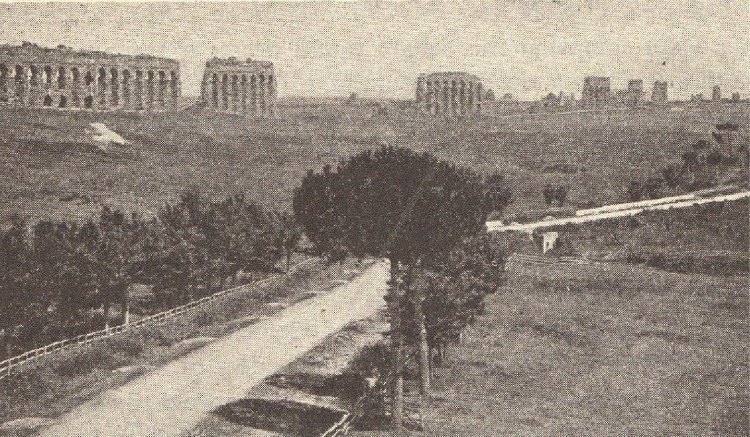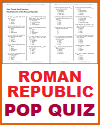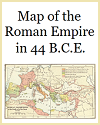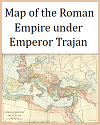| Appian Way and Claudian Aqueduct |
|---|
| www.studenthandouts.com ↣ World History ↣ Ancient Rome ↣ Ancient Rome Maps & Pictures |
 |
|
Appian Way and the Ruins of the Claudian Aqueduct: The Appian Way was a military road, built as far as possible in a straight line, cutting through hills and bridging ravines. It was constructed somewhat like our macadam roads, with a pavement of hard stone resting on several layers of smaller stones set in cement. The Claudian aqueduct was one of several conduits which carried water from mountain springs to Rome. Built between A.D. 38 and A.D. 52, it was a wonderful piece of engineering, the water being carried for miles in a cement-lined channel at the top of great arches of stone masonry, some of which are still standing. Click here to enlarge.
Ancient Roman aqueducts were remarkable engineering feats that played a crucial role in supplying water to Roman cities, towns, and agricultural areas. These aqueducts are a testament to the Romans' expertise in hydraulics and construction. Purpose: Roman aqueducts were designed to transport fresh water from distant sources to urban centers, ensuring a reliable supply of clean water for drinking, sanitation, and various public and private uses. They also supplied water for agricultural irrigation. Design and Structure: Roman aqueducts were typically built using a combination of underground conduits and elevated channels. The system started with a source of freshwater, which was often located in hilly or mountainous regions. Source: Aqueducts usually began at a water source, such as natural springs, rivers, or artificial reservoirs. The source needed to be at a higher elevation than the destination to allow gravity to move the water. Channel and Conduit: The aqueducts included a system of channels, tunnels, and conduits that conveyed the water over long distances. Channels might be constructed from masonry or lined with waterproof materials, such as concrete or clay tiles. Tunnels: In some cases, aqueducts required tunnels through mountains or hills to maintain a consistent gradient. These tunnels were often meticulously engineered. Arches and Elevated Sections: In areas where the terrain was not suitable for underground channels or tunnels, the Romans constructed elevated sections of the aqueduct using arches and stone piers. These elevated aqueducts are some of the most iconic and recognizable elements of Roman engineering. Siphons: Romans also employed siphons in their aqueduct systems. Siphons allowed the aqueduct to cross valleys and depressions without the need for continuous downward slopes. Water was lifted and carried through pipes at high points using the siphon effect. Distribution: At the destination city or town, the aqueduct's water was collected in a distribution tank or reservoir. From there, the water was channeled through a network of smaller pipes to reach fountains, public baths, private homes, and other locations. Maintenance: Aqueducts required regular maintenance to keep them in good working order. Roman engineers and work crews would inspect the aqueducts, clean out sediment buildup, and repair any damage or leaks. Impact: Roman aqueducts had a profound impact on urban planning, public health, and quality of life. They allowed for the development of larger and more sophisticated cities, provided citizens with access to clean water, and contributed to Roman hygiene and sanitation. Legacy: Many ancient Roman aqueducts continued to be used or were repurposed during the medieval and later periods. Some of them even serve as part of modern water supply systems today. One of the most famous Roman aqueducts is the Aqua Claudia, which supplied water to the city of Rome. These engineering marvels stand as enduring symbols of the Roman Empire's ingenuity and its commitment to the welfare of its citizens. |
 |  |  |  |  |  |
| Ancient Rome Books and Films | Ancient Rome Outlines and PowerPoints |
| Ancient Rome Maps and Pictures | Ancient Rome Study Games |
| Ancient Rome Miscellany | Ancient Rome Worksheets |
| www.studenthandouts.com ↣ World History ↣ Ancient Rome ↣ Ancient Rome Maps & Pictures |








